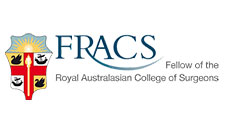Blog
Prospective study showed TKA not detrimental to patient participation in sports
Results of a study presented at European Society of Sports Traumatology, Knee Surgery and Arthroscopy Congress, here, showed patients who participated in sports before total knee arthroplasty were able to participate in sports postoperatively and in some cases, patients were more active in sports after surgery.
A look at factors correlated with scapular notching after reverse shoulder arthroplasty
At the American Academy of Orthopaedic Surgeons Annual Meeting, Eric Ricchetti, MD, discussed implant and patient-specific factors correlated with scapular notching following reverse shoulder arthroplasty. He noted increased range of motion caused more impingement events which lead to scapular notching.
Total knee arthroplasty: analysis shows EXPAREL reduces length of hospital stay and improves discharge status compared to standard analgesic modality
Pacira Pharmaceuticals, Inc. has announced results of new data showing that EXPAREL® (bupivacaine liposome injectable suspension) infiltration compared to a standard analgesic regimen in patients undergoing total knee arthroplasty (TKA) significantly decreased the length of hospital stay and increased the likelihood that a patient would be discharged to their home rather than a care facility when released from the hospital.
Low Star Excursion Balance Test scores linked with risk of ankle sprains in football players
Recently published results that evaluated high school and collegiate football players during the preseason highlighted lower Star Excursion Balance Test scores for anterior reach as a predictor of lateral ankle sprains and noted players who had these injuries had a significantly higher BMI.
Prevalence of Total Hip and Knee Replacement in the United States
Background: Descriptive epidemiology of total joint replacement procedures is limited to annual procedure volumes (incidence). The prevalence of the growing number of individuals living with a total hip or total knee replacement is currently unknown. Our objective was to estimate the prevalence of total hip and total knee replacement in the United States.
A 48-year-old woman with right knee pain
A 48-year-old woman with a history of hypertension, rheumatoid arthritis treated with chronic prednisone, and a two-pack-per- week cigarette use, presented to clinic with 8 years of right knee pain. She had an intra-articular steroid injection with some relief 6 years ago. She denied any hip pain and uses a cane for ambulation.
Stiff shoulders less likely to re-tear after rotator cuff repair vs non-stiff shoulders
Patients who had preoperative shoulder stiffness and those who developed stiffness at 6 weeks and 12 weeks postoperatively after rotator cuff repair were less likely to experience a re-tear compared with patients who had no stiffness, according to results presented here.
What constitutes good treatment of tennis elbow?
The two most common treatments for tennis elbow are physiotherapy and cortisone injections. It is unclear which of these gives the best result, and diagnosis can be problematic for general practitioners. Now researchers at teh University of Oslo have taken a closer look at the treatment methods.
The Changing Landscape of Joint Replacement
The International Congress for Joint Reconstruction (ICJR) recently sponsored a CME symposium, accredited by Marshall University, designed to help orthopaedic surgeons understand the steps involved in planning and implementing an outpatient joint replacement surgery program.
Nearly half of patients safe for discharge by postoperative day 2 after total joint arthroplasty
Among patients who underwent total joint arthroplasty required to follow the Medicare 72-hour-stay rule, 47.88% were safe for discharge to a skilled nursing facility by postoperative day 2, according to results presented at the American Orthopaedic Association Annual Meeting.





